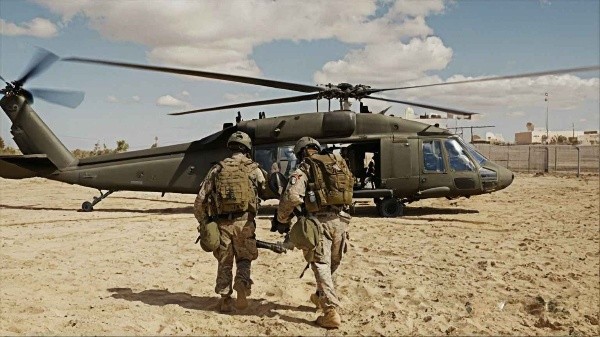Iran’s Plan to Strike Back Against the U.S.
Iran’s Military Preparations Following U.S. Attacks
Loading...

The prime minister says American troops are no longer needed in the country
Transitioning Military Presence
The United States has announced plans to conclude its military mission in Iraq within the next twelve months, as outlined in a joint statement from both the U.S. and Iraqi governments. This decision comes amid rising tensions in the Middle East, particularly with ongoing hostilities between Israel and the Lebanese militant group Hezbollah, which have raised concerns about the potential for broader conflict.
Following extensive discussions involving the Iraqi Higher Military Commission, the U.S., and the international coalition, the American military presence will shift towards a bilateral security partnership. This transition is expected to be completed by September 2025, marking a significant change in the nature of U.S. involvement in Iraq.
Continued Operations in Syria
While the U.S. military mission in Iraq is set to transition, the coalition forces will maintain their presence in oil-rich areas of neighboring Syria until at least September 2026. This ongoing operation aims to prevent the resurgence of the ISIS terrorist threat, as highlighted in the joint statement released by the U.S. State Department.
A dedicated commission will be established to facilitate this transition, ensuring the safety and protection of coalition advisors still present in Iraq. Despite the changes, Pentagon spokesperson Sabrina Singh clarified that this does not equate to a full withdrawal of U.S. forces. “Our footprint is going to be changing within the country,” she stated, emphasizing that the U.S. remains committed to its role in Iraq.
Iraqi Leadership's Perspective
Iraqi Prime Minister Mohammed Shia al-Sudani has expressed that American troops are no longer necessary in Iraq, reflecting a significant shift in the country’s security landscape. In a recent interview, he noted, “Iraq in 2024 is not the same as Iraq in 2014. We have moved on from wars to stability.” This sentiment underscores the Iraqi government’s desire for greater autonomy in managing its security affairs.
The U.S. military initially invaded Iraq in 2003, citing the presence of weapons of mass destruction—a claim that was later discredited. The invasion led to widespread devastation and instability, ultimately giving rise to extremist groups like ISIS. Following the resurgence of ISIS in 2014, U.S. troops returned to Iraq to assist in combating the threat, but the situation has evolved significantly since then.
Concerns Over Regional Stability
The decision to withdraw U.S. troops comes amid fears that a hasty exit could mirror the chaotic withdrawal from Afghanistan, which raised concerns about the potential for similar destabilization in Iraq. Recent months have seen U.S. personnel targeted by missile attacks on military installations in both Iraq and Syria, exacerbating tensions in the region.
As the U.S. prepares for this transition, the Iraqi government has been engaged in formal negotiations regarding the withdrawal of troops for nearly nine months. The ongoing discussions reflect a long-standing desire among Iraqi officials for a reduction in foreign military presence, which they believe is essential for national sovereignty.
Conclusion
The planned withdrawal of U.S. troops from Iraq marks a pivotal moment in the country’s ongoing journey towards stability and self-reliance. As the U.S. shifts its military focus, the Iraqi government is poised to take greater responsibility for its security. However, the complexities of regional dynamics and the lingering threat of extremist groups will continue to challenge Iraq’s path forward. The international community will be closely monitoring these developments, hoping for a peaceful resolution that prioritizes the safety and stability of the region.
Editor
Iran’s Military Preparations Following U.S. Attacks
Troops remain in five strategic locations, raising fears of renewed tensions and long-term occupation.
Opposition forces have taken control of the capital after a significant offensive. Here is how it unravelled.
